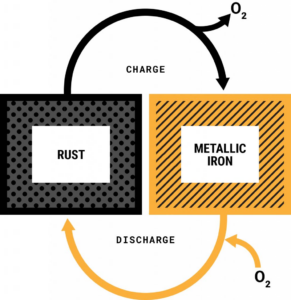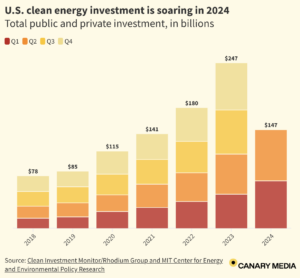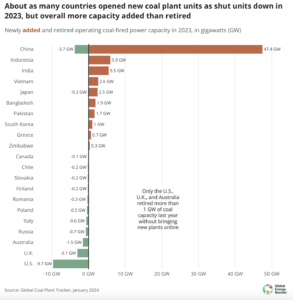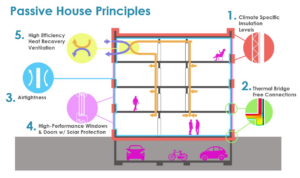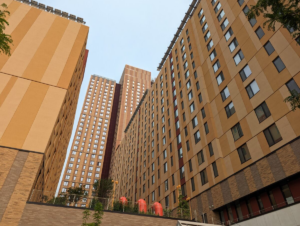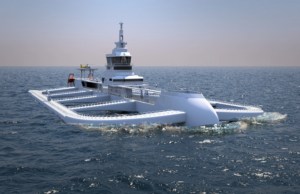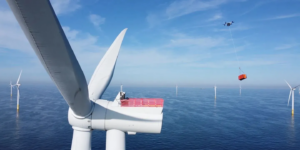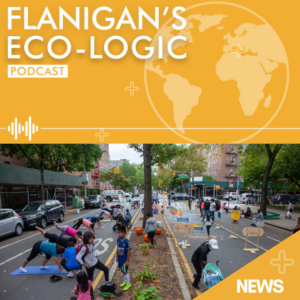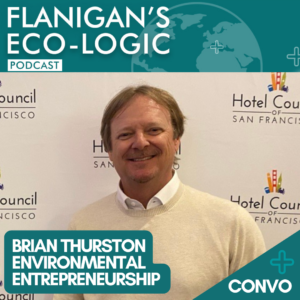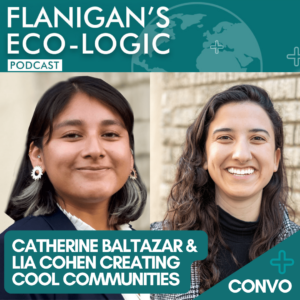In This Issue
- Flanigan’s Net Positive: Open Streets
- World’s Biggest Battery Planned for Maine
- Dutch Stadium Steps Towards Net Positive
- Record Investment in Clean Energy
- Remembering the Coal Reality
- The Passive House Standard and Network
- Ocean Ark’s Fish Farming Vision
- Heavy-Lift Cargo Drones Servicing Offshore Wind
- Flanigan’s Eco-Logic Podcast Updates
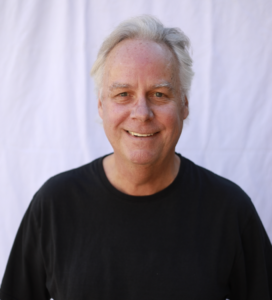
Flanigan’s Net Positive: Open Streets
When I went north to University of Vermont as a freshman, the main downtown area in Burlington was built around Church Street, a one-way bustling city street lined with retail shops from Main to Pearl and pronounced by the stately unitarian church at its north end. Back then, and after dark, out came the hot rods, the engines revved, and Church Street became a drag strip! It was really noisy and dirty… and then it all changed.
In 1971, Burlington hosted a four-block street fair and 15,000 people showed up. Magnetic. The seed was planted to transform the city’s busiest street, its hub. Then in the 1980 – 1981 time frame, construction took place transforming Church Street into a pedestrian-only mall.

Now, on a summer evening, Church Street is for diners, families and friends and lovers, and strollers. There’s street music, local art for sale. You can pop into Ben & Jerry’s for a cone and maybe even watch an outdoor movie there. The mall itself has lots of benches, trees, and some large boulders that shift one’s cognitive set. It’s hard to imagine cars here now, the pavement long since replaced with red bricks. It’s a happening environment for people. Shops and restaurants thrive.
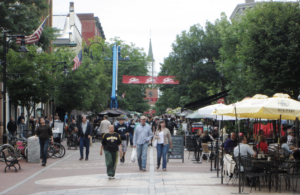
Converting streets for pedestrians and bicyclists, and dedicated streets auto-free, is a movement… the Open Streets movement. Witness Pearl Street in Boulder and the Third Street Promenade in Santa Monica. Like Church Street, these are now destinations. Years ago I visited Hannover, Germany, the home of Volkswagen and thus very car-centric. Its municipal government decided to take its busiest downtown area and to turn it into a pedestrian mall. Wildly controversial at first, it became a rave success.
Last year, Terry and I were in Malaga, Spain. Many of its downtown streets are blissfully devoid of cars. Its wide boulevards are for pedestrians., We marveled at the high shades covering the streets… three floors up, creating an airy space, the breeze and shade structures keeping the urban heat island effect to a minimum. And it is clean. Barcelona’s mile-long Las Ramblas connects Plaça de Catalunya with the port there. It’s another great example of using open streets to create high quality of life spaces. Good for the economy… good for the soul of residents and visitors.
Somehow, taking away the auto enriches the urban atmosphere. Ciclavia is a testament to that… reclaiming busy routes for weekend events that draw tens of thousands of bicyclists. They pour out onto streets normally too dangerous to ride. Minneapolis has an Open Streets program that transforms major city streets into car-free places for a day at a time. The Open Streets Project touts itself as the foremost expert on open streets programs. It provides advocacy, tool kits, and an information database of open streets projects around the world.
New York City has an Open Streets program. Its goal is to transform streets into public spaces open to all to allow for a range of activities: promoting economic development, supporting schools, facilitating pedestrian and bike mobility, and providing new ways for New Yorkers to “enjoy cultural programming” and build community.
A few weeks ago the New York Times reported that the Jackson Heights neighborhood in Queens has turned 1.3 miles of roadway into an open street for pedestrians, cyclists, and children at play. During the day, 34th Avenue is for active transportation, and leisure. The 26-block stretch is closed to cars from 7 am to 8 pm, and that has been the case every day since 2020.

Seven public schools are near the 34th Avenue route and 7,000 kids now use the corridor daily to go back and forth to school. There are tables for chess and ping pong and socializing, plenty of room for wheeling the elderly. There’s a lemonade stand, a woman tends a garden in the median of the avenue. Sounds idyllic right? Gardening club meetings, clothing swaps, cumbia dance lessons, crochet lessons, sumba, and more!
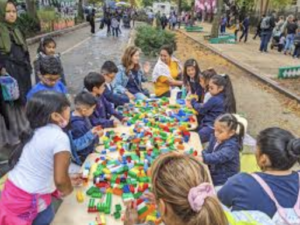
How did this project take root? In 2020, and during the pandemic, community members formed the 34th Avenue Open Street Coalition. They wanted out of their apartments. Their goal was to make their streets more people-centered. They succeeded.
But dedicating the avenue during the day to something other than cars was not without controversy. There was a petition to end the project, others wanted fewer hours of street closure, and others feared that mopeds would make walking and biking unsafe.
But its advocates, the majority indeed, prevailed. They say that the open street brought their neighborhood together. Now the community wants to make it a permanent park, they’ve already named it Paseo Park. (Paseo is Spanish for “leisurely stroll.”) For years the community has been ranked last for park space. Is green space a measure of a community’s true wealth? Perhaps so. As such, 34th Avenue is a big step and a replicable model.

